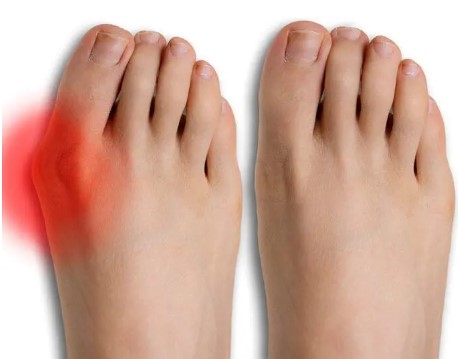Where to Find Expert Minimally Invasive Bunion Surgery?
Where to Find Expert Minimally Invasive Bunion Surgery?

Bunions, a bony bump that forms on the joint at the base of the big toe, can be a source of discomfort and pain for many individuals. While conservative treatments such as proper footwear and orthotics may offer relief for some, others may require surgical intervention, particularly when the condition becomes severe. Fortunately, advancements in medical technology have led to the development of minimally invasive bunion surgery, offering patients a less invasive option with quicker recovery times and less post-operative pain. In this article, we will explore the benefits of minimally invasive bunion surgery and guide you on where to find expert care for this procedure.
Understanding Minimally Invasive Bunion Surgery
Minimally invasive bunion surgery is a modern approach to treating bunions that involves smaller incisions and specialized instruments compared to traditional open surgery. This technique aims to correct the misalignment of the big toe joint while preserving as much healthy tissue as possible. By minimizing tissue damage and trauma to surrounding structures, patients typically experience less pain and swelling post-operatively.
Advantages of Minimally Invasive Bunion Surgery
Minimally invasive bunion surgery offers several advantages over traditional open surgery. Some of these benefits include:
- Reduced post-operative pain and discomfort
- Faster recovery times
- Smaller incisions leading to minimal scarring
- Lower risk of infection
- Preservation of joint function and range of motion
- Less damage to surrounding soft tissues and muscles
Criteria for Candidacy
While minimally invasive bunion surgery is an excellent option for many patients, not everyone may be a suitable candidate. Factors such as the severity of the bunion, the presence of arthritis, and the overall health of the patient must be considered. Your podiatric foot and ankle surgeon will evaluate your condition thoroughly to determine if you are a candidate for this procedure.
The Importance of Choosing an Expert Surgeon
When considering minimally invasive bunion surgery, it is crucial to select a highly skilled and experienced surgeon. Podiatric foot and ankle surgeons who specialize in this technique have undergone extensive training and possess the expertise needed to achieve optimal results. Additionally, they utilize state-of-the-art equipment and stay updated on the latest advancements in minimally invasive techniques.
Where to Find Expert Care
If you are seeking expert minimally invasive bunion surgery, look no further than the Foot and Ankle Center of Arizona, led by Dr. Kris A. DiNucci. As a board-certified podiatric foot and ankle surgeon, Dr. DiNucci specializes in minimally invasive techniques and is dedicated to providing compassionate care to his patients. Located in Scottsdale, AZ, the Foot and Ankle Center of Arizona offers a welcoming environment and personalized treatment plans tailored to each patient’s unique needs.
What to Expect During the Procedure
During minimally invasive bunion surgery, the surgeon makes small incisions around the bunion, allowing access to the underlying bone and soft tissues. Specialized instruments are then used to realign the joint and remove any bony prominences. Once the correction is complete, the incisions are closed, and patients are typically able to walk shortly after the procedure.
Recovery and Rehabilitation
One of the significant advantages of minimally invasive bunion surgery is the shorter recovery period compared to traditional open surgery. While individual recovery times may vary, most patients can expect to resume normal activities within a few weeks following the procedure. Physical therapy and home exercises may be recommended to aid in the recovery process and restore strength and flexibility to the foot.
Frequently Asked Questions
Q: Is minimally invasive bunion surgery suitable for everyone?
A: While minimally invasive bunion surgery offers many benefits, not all patients may be candidates for this procedure. Your surgeon will assess your condition and medical history to determine the most appropriate treatment plan for you.
Q: Will I experience pain during or after the procedure?
A: Minimally invasive bunion surgery is designed to minimize post-operative pain and discomfort. Your surgeon will provide pain management strategies to ensure your comfort throughout the process.
Q: How long does it take to recover from minimally invasive bunion surgery?
A: Recovery times vary from patient to patient but generally range from a few weeks to a few months. Your surgeon will provide specific instructions on post-operative care and activity restrictions to facilitate a smooth recovery.
Conclusion
Minimally invasive bunion surgery offers an excellent alternative to traditional open surgery for patients seeking relief from bunion pain and deformity. By choosing an expert surgeon and following a comprehensive treatment plan, patients can achieve excellent outcomes with minimal discomfort and downtime. If you are considering minimally invasive bunion surgery, contact the Foot and Ankle Center of Arizona today to schedule a consultation with Dr. Kris A. DiNucci.








